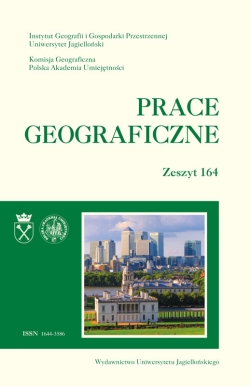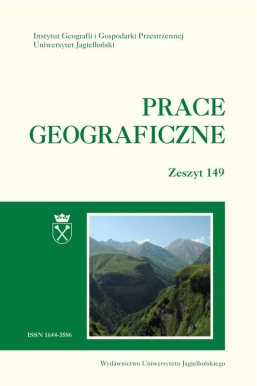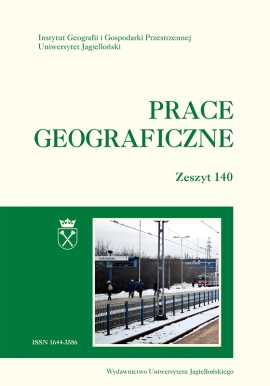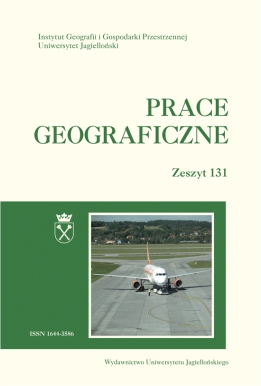Springs are objects of natural environment, which are studied by different scientific disciplines: geography, hydrology, hydrogeology, hydrochemistry, hydrobiology, ecology, environmental protection, landscape architecture, touring, archeology and ethnography. These objects, in both the past and the present, were of a great importance to man, who, in different ways and very willingly, used the clean water flowing out and the surrounding environment. Springs, giving rise to streams, which feed into larger rivers, have great scientific, economic, natural, landscape, cultural and even therapeutic values. They have been protected from devastation and pollution for centuries, mainly due to the rational and often iconic perception of them. They were and still are objects of mystification resulting from the assignment of miraculous properties to their water and fantastic legends and historical events to places where they flow out. The question of the origin of water coming from springs has always been vividly discussed. It has contributed to both the development of natural sciences and to the creation of fantastic theories pointing to a specific “power” of these places and healing properties of discharging water. Interesting descriptions of springs that draw people’s attention have appeared in many travel experience stories, which brought them fame. Many springs have become places of worship, being famous for the descriptions of their healing abilities, related myths and fantastic phenomena, which additionally increased the desire to feel their “spirit”.
The area of Poland is already quite well recognized in the aspect of springs. The knowledge about Polish springs has definitely increased in recent decades, mainly as a result of research conducted at all academic centers of the country, as well as thanks to the work on consecutive charts of the Hydrographic Map of Poland. The oldest information about springs in Poland can be found in historical records as well as in information and descriptions prepared for the needs of mining and balneology. Specialist publications and monographic views on springs and other groundwater outflows appeared in the middle of the 18th century. The springs of Małopolska were recognized at earliest. In the second half of the 20th century scientific works on the springs of the Tatras were published, followed by descriptions of the Carpathians, the Sudetes and the uplands: Kraków-Wieluń, Miechów, Lublin as well as the Nida Basin. Springs of the Łódź Region were also examined. At the end of the 20th and the beginning of the 21st century numerous issues, documenting the occurrence of springs and other outflows in the lowlands and lakelands of Poland, were also published. Despite the quite intensive research and passing years, the number of springs in Poland is still not known, not even estimated. Few outflows are monitored continuously. There are many reasons for this, including the disappearance and devastation of many objects because of anthropopressure and low interest in springs in hydrological and hydrogeological communities. It is probably due to the fact that springs operate at the boundary of the surface and the underground phase of the water cycle. In spite of this, dozens of springs in Poland have been studied in detail, in terms of hydrology, hydrochemistry, hydrobiology and water management.
The place of natural outflow of groundwater with the accompanying depression and water discharge stream creates the spring niche, and, in a wider perspective, the spring zone (the spring area). Such areas occur in various topographical, hydrographic and hydrogeological conditions. The way the water flows out as well as its dynamics and properties are also diversified. Springs waters, usually of a very good quality, have been used by humans for their needs for a long time. Their intakes form an important part of the water management infrastructure. At the same time, the sites of water outflow are important elements of natural and cultural landscapes, enriching them with new values and forms. Springs are often the objects of cultural and religious heritage and are tightly linked to the history of a given place or have a particular significance to the local community. They are sites willingly visited by tourists and recreationists. They provide the basis for the development of balneology and touring, as well as for the cult associated with the symbolism of water or religion.
Springs are important elements of geographical environment, they are also objects possessing unique scientific, landscape and water management characteristics. Due to their high susceptibility to anthropopressure, related to the frequent devastation of outflow sites and degradation of water resources, it is necessary to implement systematic and, nowadays, even urgent activities to preserve these places in their possibly natural state. Such protection should cover the place of outflow of underground water, the spring niche, as well as the groundwater basin. This task can be implemented by local communities, via administrative or ecological education, adequate to the course of actions and the significance of the local impact on the environment. In the case of particularly valuable springs, the establishment of protection zones, which would be similar to the preservation zones of public wells, should also be taken into account. However, to achieve this, it is necessary to recognize, calibrate and, above all, provide an inventory of all valuable springs in Poland.









































































